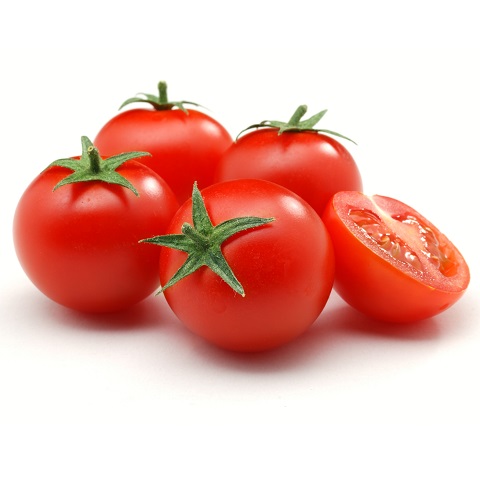| Disease / pest | Damage stage | Management / Chemical | Organic |
|---|---|---|---|
 |
Economic Importance:
|
Management:
|
- Home
- शेतकऱ्यांसाठी माहिती
- Vegetables
- टोमॅटो
टोमॅटो
Category: Vegetables
- Farmer Knowledge
- Nutrients
- Pests
- test
Farmer Knowledge
|
Life Cycle Of Pest: |
||||
|---|---|---|---|---|
| Description: | Stage 1: Egg | Stage 2: Larvae | Stage 3: Pupae | Stage 4: Adult |
| Mark Of Identification: | ||||
| Life Cycle: |
Management (Pest Control):
| Chemical: | |
|---|---|
| Organic: |
Nutrients
|
Crop Stage Images |
||||||
|---|---|---|---|---|---|---|
| Crop Stage | Germination | Transplanting to plant establish stage | Vegetative Stage | Flower Initiation to 1st picking | Harvesting | |
| Duration (in days) |
10 | 30 | 30 | 80 | ||
|
Nutrients (Kg/ha) |
N | 20 | 80 | 60 | 40 | |
| P | 7.50 | 15 | 7.50 | 7.50 | ||
| K | 10 | 40 | 30 | 20 | ||
Pests
Fruit BorerLeaf MinerAphidsWhite FlyThrips
| Life Cycle Of Pest: | ||||
|---|---|---|---|---|
| Description: | Stage 1: Egg | Stage 2: Larvae | Stage 3: Pupae | Stage 4: Adult |
| Mark Of Identification: | ||||
|
Life Cycle: |
Management (Pest Control):
| Chemical: | Installation of pheromone traps can minimizes population of male moth. |
|---|---|
| Organic: | Spray G Agro Beauveria 5gm/lit + G Agro Metarohizium 5ml/lit 2 to 3 spray at 21 days interval. |
| Life Cycle Of Pest: |  |
 |
 |
 |
|---|---|---|---|---|
| Description: | Stage 1: Egg | Stage 2: Larvae | Stage 3: Nymphs | Stage 4: Adult |
| Mark Of Identification: | ||||
|
Life Cycle: |
Management (Pest Control):
| Chemical: | Monitoring the presence of flies by yellow sticky traps & spray crop with insecticide. |
|---|---|
| Organic: | Spray G Agro Beauveria 5gm/lit + G Agro Metarohizium 5ml/lit 2 to 3 spray at 21 days interval. |
| Life Cycle Of Pest: |  |
 |
 |
 |
|---|---|---|---|---|
| Description: | Stage 1: Egg | Stage 2: Larvae | Stage 3: Nymphs | Stage 4: Adult |
| Mark Of Identification: | ||||
|
Life Cycle: |
Management (Pest Control):
| Chemical: | Spray dimethoate 0.03% or methyl demeton 0.025. |
|---|---|
| Organic: | Spray G Agro Lecanicillium 5ml/lit 2 to 3 spray at 21 days interval. |
| Life Cycle Of Pest: |  |
 |
 |
 |
|---|---|---|---|---|
| Description: | Stage 1: Egg | Stage 2: Larvae | Stage 3: Pupa | Stage 4: Adult |
| Mark Of Identification: | ||||
|
Life Cycle: |
Management (Pest Control):
| Chemical: | Spray the crop with 0.1% methyl dematon or phosphamidon or monocrotophos or dimethoate or 0.05% fenpropathrin as soon as incidence is noticed. |
|---|---|
| Organic: | Spray G Agro Beauveria 5gm/lit + G Agro Lecanicillium 5ml/lit 2 to 3 spray at 21 days interval. |
| Life Cycle Of Pest: | ||||
|---|---|---|---|---|
| Description: | Stage 1: Egg | Stage 2: Larvae | Stage 3: Nymphs | Stage 4: Adult |
| Mark Of Identification: | ||||
|
Life Cycle: |
Management (Pest Control):
| Chemical: | Spraying the crop with 0.02 % phosphamidon or 0.025 % methyl demeton or 0.03 % dimethoate at 10 days interval as per needed. |
|---|---|
| Organic: | Spray G Agro Lecanicillium 5gm/lit + G Agro Metarohizium 5ml/lit 2 to 3 spray at 21 days interval. |
test
Diseases/Pest on Tomato :
- Fruit borer
- Leaf miner
- Aphids
- White Fly
- Thirps
Get the detailed information here:
| Disease / pest | Damage stage | Management / Chemical | Organic |
|---|---|---|---|
 |
Marks Of Identification:
Nature Of Damage:
|
Management:
|
| Disease / pest | Damage stage | Management / Chemical | Organic |
|---|---|---|---|
  |
Nature Of Damage:
|
Management:
|
| Disease / pest | Damage stage | Management / Chemical | Organic |
|---|---|---|---|
  |
Nature Of Damage:
|
Management:
|
| Disease / pest | Damage stage | Management / Chemical | Organic |
|---|---|---|---|
  |
Nature Of Damage:
|
Management:
|

